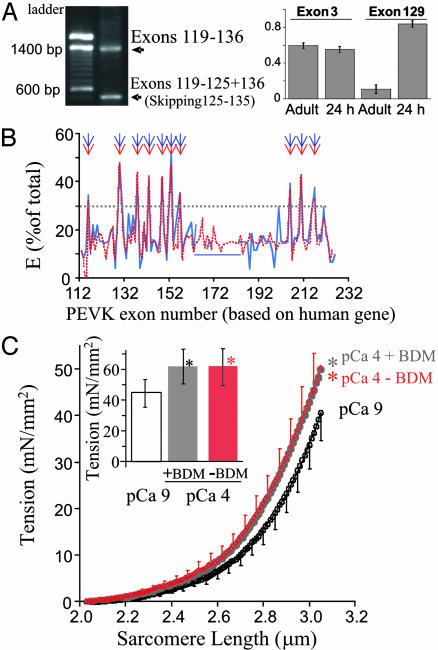Fig. 5.
(A Left) PCR with exon119-sense plus exon136-reverse primers and human skeletal muscle cDNA results in not only a full-length product but also a 500-bp product in which exons 126-135 are spliced out (right lane, bottom). (Right) Hybridization of rabbit psoas muscle cDNAs to probes specific to titin exons 129 and 3 reveals developmental regulation of exon 129 expression, with low levels in adult animals and ≈8-fold higher levels in 24-h-old neonates (for technical details, see Supporting Text). (B) Glutamate content in PEVK exons of human (red) and mouse (blue) titin gene (curves overlap). Human has 114 PEVK exons, 10 of which have >30% glutamate (E) content. All E-rich motifs are conserved in human (red arrows) and mouse (blue arrows) genes. (C) Calcium effect on tension developed by muscle fibers from which actomyosin interaction had been abolished (see Results and Discussion). Relation between tension and SL measured during slow stretch (0.1 μm per half sarcomere sec) at pCa 9 (open circles) and pCa 4 with (gray symbols) and without (red symbols) 30 mM BDM (pCa 4 data sets overlap). (Inset) Tension at end of rapid stretch (10 μm per half sarcomere sec) from slack length to SL 2.7 μm. Calcium addition resulted in a BDM-independent tension increase. Shown are mean values ± SEM of six fibers. *, Significant difference between pCa 4 and pCa 9 results.

